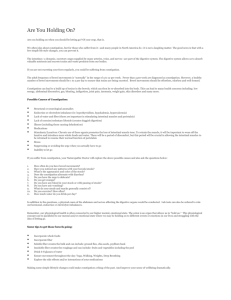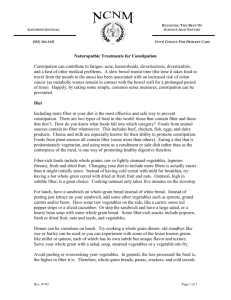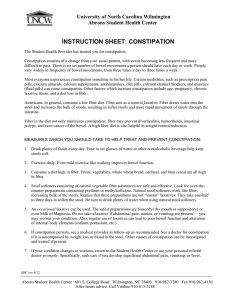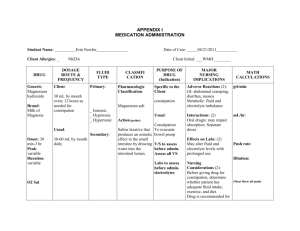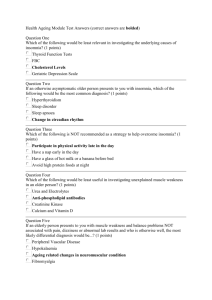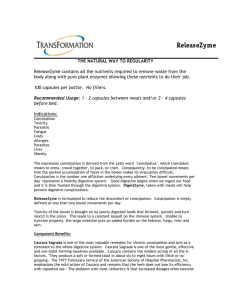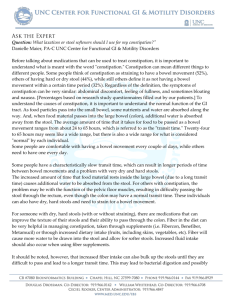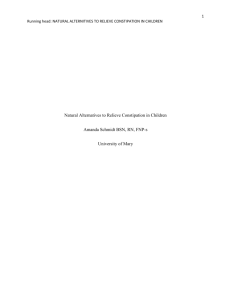Fiber_and_Constipation
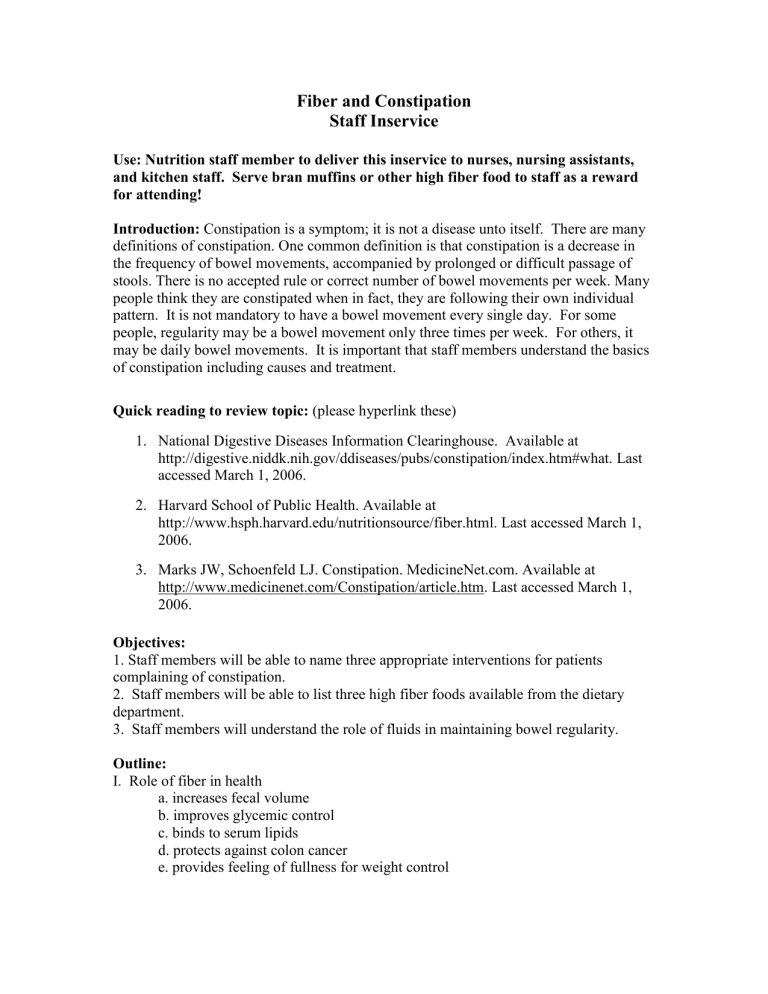
Fiber and Constipation
Staff Inservice
Use: Nutrition staff member to deliver this inservice to nurses, nursing assistants, and kitchen staff. Serve bran muffins or other high fiber food to staff as a reward for attending!
Introduction: Constipation is a symptom; it is not a disease unto itself. There are many definitions of constipation. One common definition is that constipation is a decrease in the frequency of bowel movements, accompanied by prolonged or difficult passage of stools. There is no accepted rule or correct number of bowel movements per week. Many people think they are constipated when in fact, they are following their own individual pattern. It is not mandatory to have a bowel movement every single day. For some people, regularity may be a bowel movement only three times per week. For others, it may be daily bowel movements. It is important that staff members understand the basics of constipation including causes and treatment.
Quick reading to review topic: (please hyperlink these)
1. National Digestive Diseases Information Clearinghouse. Available at http://digestive.niddk.nih.gov/ddiseases/pubs/constipation/index.htm#what. Last accessed March 1, 2006.
2. Harvard School of Public Health. Available at http://www.hsph.harvard.edu/nutritionsource/fiber.html. Last accessed March 1,
2006.
3. Marks JW, Schoenfeld LJ. Constipation. MedicineNet.com. Available at http://www.medicinenet.com/Constipation/article.htm. Last accessed March 1,
2006.
Objectives:
1. Staff members will be able to name three appropriate interventions for patients complaining of constipation.
2. Staff members will be able to list three high fiber foods available from the dietary department.
3. Staff members will understand the role of fluids in maintaining bowel regularity.
Outline:
I. Role of fiber in health a. increases fecal volume b. improves glycemic control c. binds to serum lipids d. protects against colon cancer e. provides feeling of fullness for weight control
II. Causes of constipation a. inactivity b. hormonal changes c. iron supplements d. lack of fluids e. diet consisting of mainly processed/refined foods
III. High fiber or high residue diet a. increase the amount of fiber gradually b. include one high fiber food with each meal c. drink plenty of water d. foods to include: legumes, peas, whole grain products, raw and cooked vegetables, fruits, nuts and seeds. e. foods to use less: fruit juice rather than whole fruit
IV. Appropriate interventions for plan of care a. encourage fluids b. serve prune juice/prunes daily c. laxative/stool softener Rx d. encourage activity as permissible e. monitor bowel movements on tracking or ADL sheet f. encourage 75 percent or greater meal intake
Fiber and Constipation
Pre/Post Test
Name: ____________________________
Date: _____________________________
Department: _______________________
1. True or False: If a patient complains of constipation, an appropriate intervention is to request an order to "Encourage fluids."
2. What vitamin supplement is commonly associated with complaints of constipation? a. vitamin C b. zinc c. iron d. vitamin B12
3. In the following pairs of foods, which would be the better choice for a constipated resident? a. orange juice or a fresh orange b. Rice Krispies or bran flakes c. macaroni salad or three bean salad
4. True or False: Encouraging a patient to be as active as possible within the limits of his/her medical condition is an important part of relieving constipation.
5. True or False: A high fiber diet may help a diabetic patient achieve glucose control
.
Answer Key
1. True
2. Iron
3. Fresh orange, bran flakes, three bean salad
4. True
5. True
